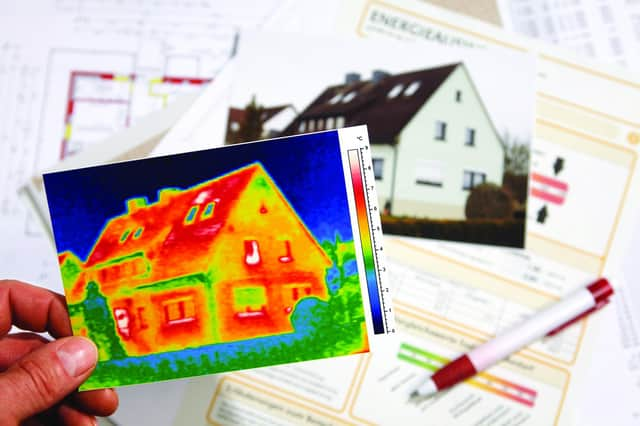David Corrie: New system will not be as easy as EPC


It proposes a root-and-branch reform of all aspects of the certificates, including cutting their duration from ten years to five years, and adding new aspects of energy performance – such as emissions of CO2 per square metre, heat retention by the walls and roof of the property, plus total energy use – in addition to the current system.
The consultation closes on 16 October, and I would encourage all to have a look and provide feedback on the Scottish Government website.
Advertisement
Hide AdAdvertisement
Hide AdThe current EPC system has been in operation for 14 years and is widely understood. Changing it in this manner will lead to confusion among home owners, buyers and sellers.
The terminology proposed in this consultation is complicated and will not be understood by the majority of people. In addition, the suggestion is to have two A-G ratings on the same certificate – for different aspects of the property’s performance. This adds unnecessary complexity and is again likely to mystify many potential buyers.
Instead of changing the ratings system, the key issue that needs to be tackled is how to support and encourage people to upgrade their homes to reduce carbon emissions and improve heat retention.
The proposal is that all owner-occupied properties should meet Band C for energy efficiency between 2023 and 2025, either at the point of sale, or if there is a major refurbishment project or replacement of the heating system. There is a backstop date of 2033 for owner-occupied homes and an earlier one of 2028 for properties in the private rental sector, but there will be exceptions where it is not technically feasible or cost effective.
Research published in 2019 found that only 45 per cent of Scotland’s homes had an EPC rating of Band C or better.
In some traditional rural housing, improving the rating of some properties to the proposed threshold may be impossible – or economically unfeasible and impractical, even allowing for the subsidies that are available to help cover the cost.
In my team’s day-to-day conversations with those buying and looking to buy a property, it is clear that many people are very keen to make the transition to green energy for their homes.
One such example is a couple who live in a rural cottage near my home in Dumfries and Galloway, who proposed to undertake some significant improvements to improve the property’s energy efficiency and decrease their energy bills. A range of options were considered, including fitting solar panels on the roof, installing an air source heat pump, and a small wind turbine in the garden.
Advertisement
Hide AdAdvertisement
Hide AdThey were told that once all the upgrades were complete, the cottage would improve its energy efficiency from its rating of F to a D – but still not up to the C rating required.
Having considered the costs and disruption involved, the couple ultimately decided not to go ahead with the works. This demonstrates the challenge faced by owners of rural property – even those who are desperately keen to reduce their carbon emissions will struggle to make the grade without significant intervention from the government.
Careful consideration should be given to any policy which seeks to bring all property up to a certain threshold, bearing in mind the vast range of age, type and quality of private, and public sector property across Scotland.